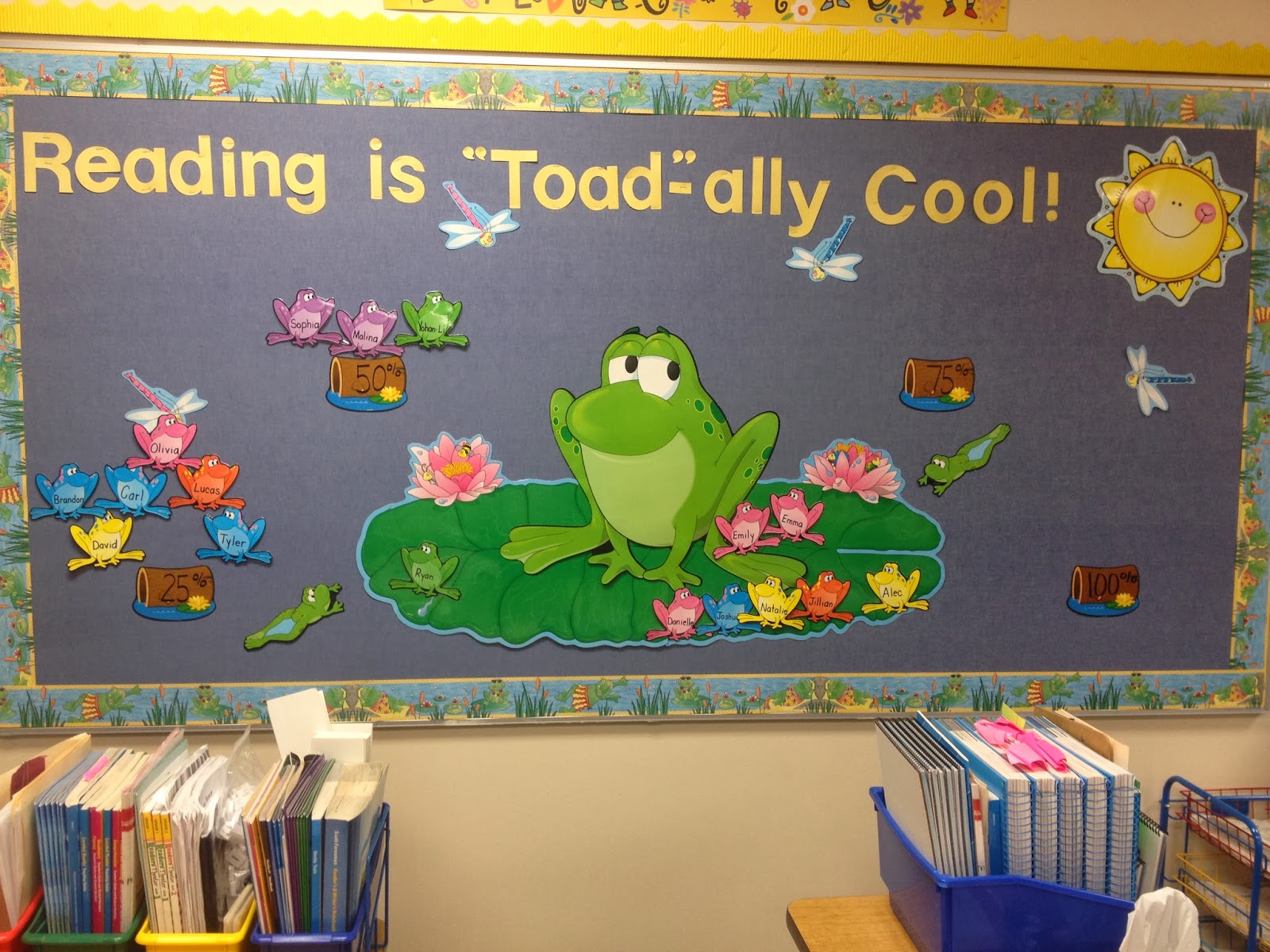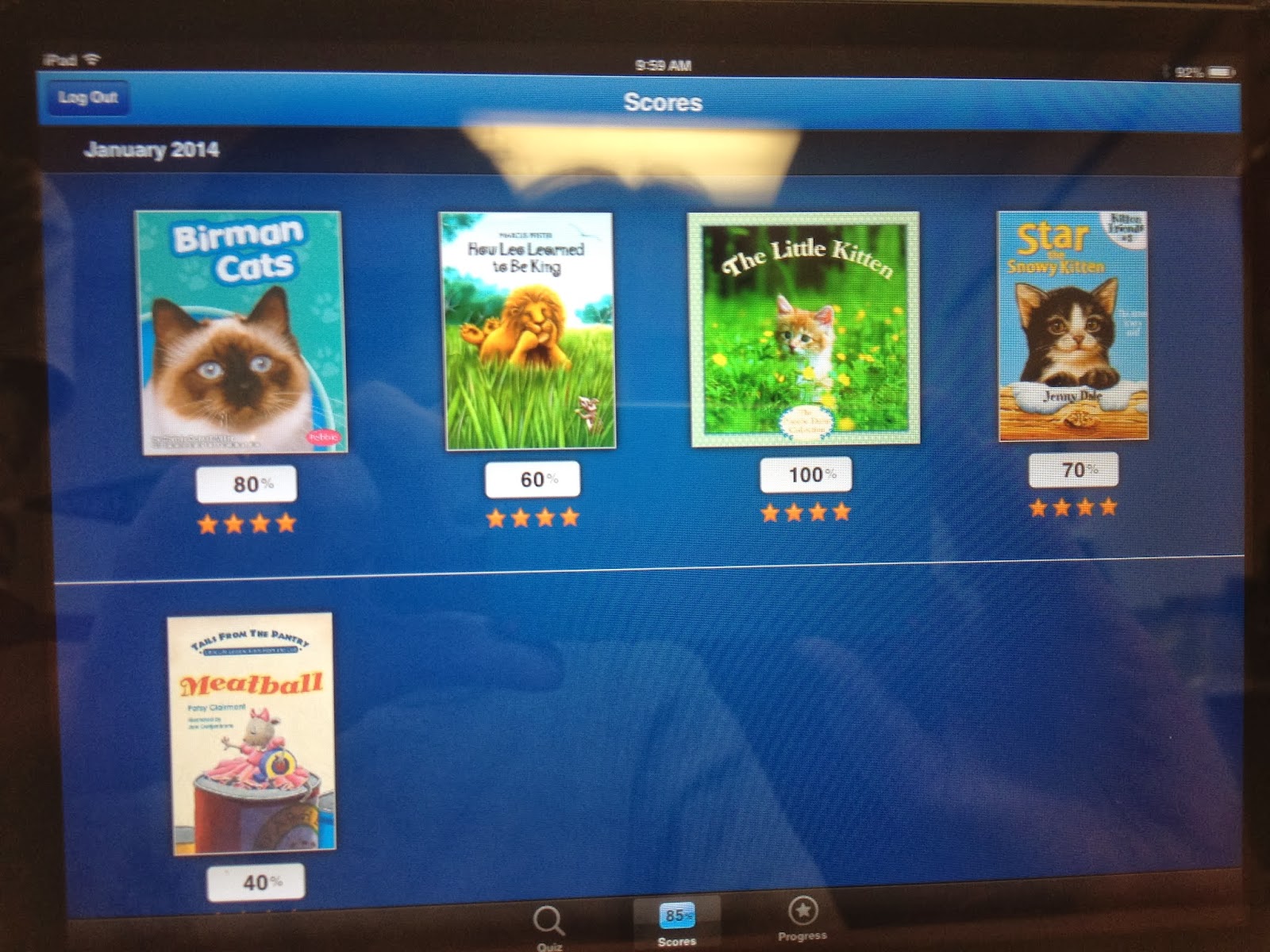Welcome back to today's post, where I want to share with you the importance of setting AR goals. Setting obtainable AR goals is the single most important motivating factor behind the success of the AR program.
Before I begin, let me back up to remind you that I talked earlier about a student's ZPD (Zone of Proximal Development) and how once that is established, they begin reading books that are in their level. So, after the ZPD has been established, students select AR books from our Media Center that interest them, then take an AR quiz which checks for comprehension of the book just read.
Now, back to goal setting!
lt's easy to set individualized reading goals with the AR Goal calculator that is linked into the AR software.
This is a Screenshot of the AR Goal Calculator.
The students names are listed with their ZPD, and grade-equivalency. Then, I go in to select a suggested amount of time for reading practice. For most students, I suggest 15 to 20 minutes per day of independent reading practice. So, after I make the selections, the software combines the grade equivalent score, along with the suggested amount of time for independent reading practice to calculate the goal. The goals are individualized based upon their grade-equivalency and the suggested amount of time for daily reading practice. For example, low-ability readers may have a goal of 4 points, whereas high-ability readers could have a 12 point goal.
Students must select books that are in their reading range to score points. Most first grade level books are worth 0.5 points, however higher level books might be worth 22 points (that would be large chapter books). So, in order for a student to earn 1 point in first grade, they would need to score 100% on 2 books.
Students love reaching their goals, and to help motivate them, the AR software has reports, and a visual flower that fills up each time a child moves closer to their individualized goal.
 |
THIS IS AN EXAMPLE OF AN AR PROGRESS REPORT.
Goal: 6.5 pts
Book Level: 3.5 (That's a first grade student-WOW)
Percent of Goal Reached: 90% (so far)
|
 |
| THIS IS A SNAPSHOT OF THE FLOWER THAT FILLS UP EACH TIME A STUDENT SCORES POINTS IN AR. THIS STUDENT HAS EARNED 1 POINT SO FAR! |
In my classroom, I use a bulletin board to help students keep track of their AR progress. This year, our classroom theme was frogs and toads, so I created a board titled,"Reading Is Toad-ally Cool" where the student's frogs jump around to each log.
 |
| MY CLASSROOM BULLETIN BOARD KEEPS TRACK OF STUDENT PROGRESS AND MOTIVATES STUDENTS TO KEEP READING. THE LILY PAD IS THE STARTING POINT. |
 |
| THESE STUDENTS HAVE MET 25% OF THEIR GOAL SO FAR THIS QUARTER. |
 |
| THESE STUDENTS HAVE MET 50% OF THEIR GOAL SO FAR THIS QUARTER. |
 |
| EVERY STUDENT WANTS THEIR FROG TO LEAP TO THE 100% LOG! THIS IS ONE MOTIVATING FACTOR OF THE AR PROGRAM! |
Wow, that's a lot of information, however it's much easier than it may sound. The students love watching their frogs LEAP around the pond until they hop onto the 100% log.
In my next blog entry, I will share with you how I reward students who meet their individualized AR reading practice goals.
So, between now and next time....Ya'll come back you hear!















